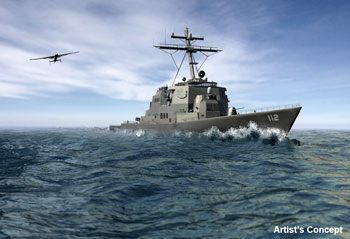INDIAN ARMED FORCES CHIEFS ON OUR RELENTLESS AND FOCUSED PUBLISHING EFFORTS

The insightful articles, inspiring narrations and analytical perspectives presented by the Editorial Team, establish an alluring connect with the reader. My compliments and best wishes to SP Guide Publications.

"Over the past 60 years, the growth of SP Guide Publications has mirrored the rising stature of Indian Navy. Its well-researched and informative magazines on Defence and Aerospace sector have served to shape an educated opinion of our military personnel, policy makers and the public alike. I wish SP's Publication team continued success, fair winds and following seas in all future endeavour!"

Since, its inception in 1964, SP Guide Publications has consistently demonstrated commitment to high-quality journalism in the aerospace and defence sectors, earning a well-deserved reputation as Asia's largest media house in this domain. I wish SP Guide Publications continued success in its pursuit of excellence.
- Indian Air Force Aims for Full Indigenous Inventory by 2047 — Air Chief Marshal A.P. Singh
- General Upendra Dwivedi takes over as the Chief of the Army Staff
- Rajnath Singh assumes charge as Defence Minister for the second consecutive term
- Admiral Dinesh K. Tripathi assumes Command of the Indian Navy as 26th Chief of the Naval Staff
- Prime Minister witnesses 'Bharat Shakti' – a Tri-Services Firing and Manoeuvre Exercise in Pokhran, Rajasthan
DARPA's TERN programme aims for eye-in-the-from sea

Effective 21st-century warfare requires the ability to conduct airborne intelligence, surveillance and reconnaissance (ISR) and strike mobile targets anywhere, around the clock. Current technologies, however, have their limitations. Helicopters are relatively limited in the distance and flight time. Fixed-wing manned and unmanned aircraft can fly farther and longer but require either aircraft carriers or large, fixed land bases with runways often longer than a mile. Moreover, establishing these bases or deploying carriers requires substantial financial, diplomatic and security commitments that are incompatible with rapid response.
To help overcome these challenges and expand DoD options, DARPA has launched the Tactically Exploited Reconnaissance Node (TERN) programme. Seeking to combine the strengths of both land- and seabased approaches to supporting airborne assets, TERN envisions using smaller ships as mobile launch and recovery sites for mediumaltitude long-endurance (MALE) fixed-wing unmanned aircraft (UAVs). Named after the family of seabirds known for flight endurance — many species migrate thousands of miles each year – TERN aims to make it much easier, quicker and less expensive for DoD to deploy ISR and strike capabilities almost anywhere in the world.
“It’s like having a falcon return to the arm of any person equipped to receive it, instead of to the same static perch every time,” said Daniel Patt, DARPA Program Manager. “About 98 per cent of the world’s land area lies within 900 nautical miles of ocean coastlines. Enabling small ships to launch and retrieve long-endurance UAVs on demand would greatly expand our situational awareness and our ability to quickly and flexibly engage in hotspots over land or water.”
DARPA seeks proposals that would design, develop and demonstrate a MALE UAV and an associated automated launch and recovery system. The UAV would have to carry a 600-pound payload and have an operational radius of 600 to 900 nautical miles from its host vessel. The launch and recovery system would have to fit Littoral Combat Ship 2 (LCS-2)-class ships and other surface combat vessels as feasible.
DARPA plans to roll out TERN in three phases over approximately 40 months, culminating in a full-scale launch and recovery demonstration.





